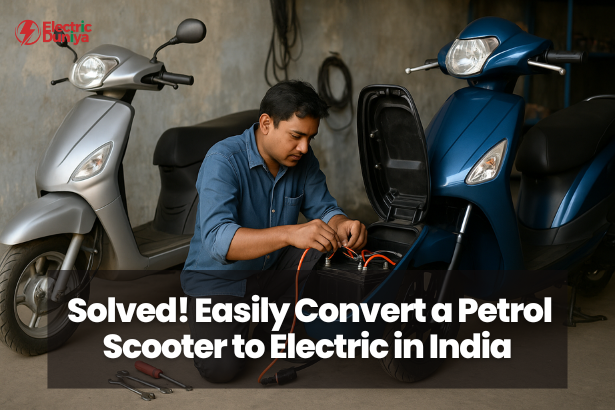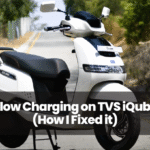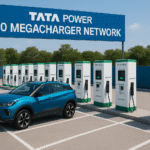With the electric vehicle (EV) revolution in India gaining pace, a large number of people are now opting for conversion kits to convert their petrol scooters into electric scooters.
At a mean price of ₹3.5 lakh, this green upgrade is transforming urban transportation. But is it really worth it? Let’s find out about the conversion trend sweeping Indian roads.
The Conversion Process Explained
An internal combustion engine must be swapped out for a battery-operated electric motor in order to convert a gasoline scooter into an electric scooter. The first step in doing this is to disassemble the engine, exhaust, and fuel tank.
An electric motor, lithium-ion battery, controller, and charger are used in their place. The installation is completed by certified garages or retrofitting businesses, who also verify that the chassis, braking, and wiring are compatible with electric systems.
These kits and fitting facilities are offered by RTO-certified companies like GoGoA1 (source). To ensure safety, compliance, and performance following conversion, precise testing and certification are crucial.
Financial Aspects
The average cost of converting a petrol scooter to an electric one is around ₹3.5 lakh, and the lithium-ion battery alone might cost anywhere from ₹1.5 to ₹2 lakh.
The cost of additional components, including the wiring harness, BLDC motor, controller, and installation charges, might reach ₹2.5–3 lakh (source).
However, government programs like FAME-II offer up to ₹60,000 in subsidies for new electric two-wheelers, and Delhi’s scrappage policy offers a further ₹5,000 in rebates for old two-wheelers (TOI). Incentives for EVs can offset long-term costs, even when direct conversion subsidies are not yet available.
Government Policies and Support
India has robust government measures to promote its push towards electric mobility. With an investment of ₹10,000 crore, the FAME-II program was launched in 2019.
It offers incentives for electric two-wheelers of up to ₹10,000 per kWh or up to 15% of the vehicle’s ex-factory price. The goal is to lower the price of EVs and promote their uptake.
Delhi’s EV Policy 2.0 is a bold target: 95% of new vehicle registrations will be electric by 2027. The policy offers incentives for retrofitting old vehicles, with up to 50% of the cost of the retrofit kit, capped at ₹50,000.
The policy also aims to prohibit the sale of new petrol and diesel two-wheelers from April 1, 2027, and restrict households to owning only two fossil fuel cars.
Market Trends and Future Outlook
India’s electric two-wheeler (E2W) industry is experiencing significant growth. In the calendar year (CY) 2024 at least 1.14 million E2Ws were sold in India, representing a year-on-year growth of 33%, equating to 59% of India’s total EV market.
Major players Ola Electric, TVS Motor, and Bajaj Auto have been key drivers of this growth, with Bajaj Auto increasing its share of the market to 25% in December 2024, surpassing Ola Electric. Future industry projections indicate that E2Ws could account for 20% of all two-wheeler sales in India by 2030, assuming sustained demand and enabling policy support from governments.
Although they are still expensive, petrol-to-electric scooter conversions are an alluring alternative for environmentally friendly mobility as India’s EV market expands.
The future of electric transportation in India appears to be bright, both literally and perhaps symbolically, as the market accelerates and policymaking becomes more audacious.







